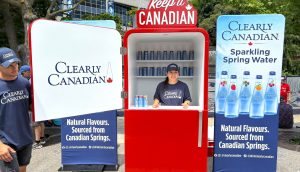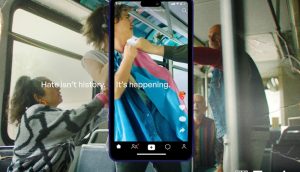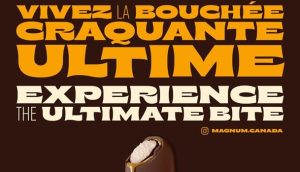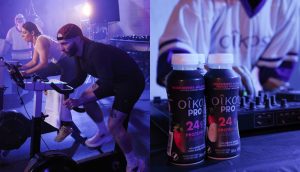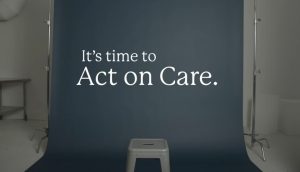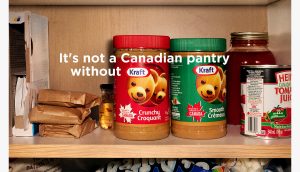The flocking to online marketing continues apace – stats presented at the OMMA conference that wrapped yesterday in NYC, point to 85% of all advertisers planning to increase their online ad budgets this year.
Keynoter Peter Weedfald, Samsung Electronics SVP consumer electronics and North America corporate marketing, an advocate of a strong online presence, points to a reason driving this migration, pontificating that ‘we’re in the ADD economy, even the ADHD economy,’ and given that ‘there’s no time for anything,’ this has changed our persona. ‘We’re in the maelstrom of change.’ And for a brand launching 180 new products across North America, with winnowing shelf-time windows, a strategic online presence across a myriad of top sites has been a key component in the plan for coping.
Part of Advertising Week, the two-day event on online media and marketing put on by MediaPost pinpointed the share of ad budget that went online last year as 3.6%, while this year it’s pegged at 4.6% – with some notable weight from some major spenders, such as Chrysler at 18%.
To help develop a digital strategy, another keynoter, Carat North America CEO David Verklin suggested sitting down, ‘today,’ and creating a media or marketing plan wherein 15% to 20% of the budget went to digital media. Other things you should do today, as per Verklin, include trying a new work process by bringing together a cross-disciplinary team to prepare your next marketing plan, and not looking to one person to lead. ‘Start by saying: ‘The consumer is now a participant in the marketing communication, not a passive recipent.” He also suggests doing a customer connection audit. Today. ‘Find out what happens when you click on Google with your brand name and 10 key words. See what the customer sees.’
Another bit of advice was ‘become a true student of the biz,’ achieved not by a skim of the trades, but rather: ‘Read and learn for your own survival.’ Part and parcel of that philosophy, he suggested taking a sales rep out to lunch in order to get up to speed on all the new digital options available, and talking to kids under 20 about IMing, SMS and blogs, and to do lunch with someone from Europe to grill them on media trends abroad.
Reinforcing the value of pursuing digital opportunities, Verklin cited Basis findings, that although the hierarchy of top launch media for generating brand awareness remain traditional – TV, availability in store and print – the top three purchase intent influencers are WOM, sampling and the internet.
Other advice on fast-tracking the path to fully exploring digital came from HP director interactive global brand marketing Mary Bermel, who suggested dealing with internal reticence to embrace new media by bringing in futurists and thinktank folks to talk about the future of media, to get everyone wanting to experiment and enabling permission (and budget) to test and learn.
Stats cited by conference MC Geoff Ramsey, CEO of NYC-based eMarketer, indicate there’s a lot of ground left to explore, and anecdotally, he relayed that some estimate that 80% of ad space on the Web is unsold or cheap. While search is at 42% of the ad spend and growing the most quickly, measurement of time spent online indicates rather a large inventory left to explore: communications takes 39.7% of online time, content 39%, commerce 17.1% and search 4.2%. He also mentioned that in an environment where everyone is looking to engage the consumer, the ability to do things online that could not air on TV is a considerable advantage, citing a Georgia Pacific toilet paper site featuring Bathroom Moments that enthralled the male members of his family.
In other pointers offered up over the two days in terms of the optimal digital approach, Joe Gillespie, CMO of CNET Networks, highlights the unforgiving nature of digital content – you know immediately if you’ve done it right – or wrong. ‘The Web offers the emotional capabilities of TV and the depth of print, and you need to satisfy [the audience] on both.’ McKinney interactive practice head Jim Russell advocated: ‘Don’t think of it as creating ad content, but as orchestrating a conversation,’ and added that all their best programs had in common a team effort, rather than one person with a big idea. Nick Law, ECD at interactive agency R/GA, speaking on a creativity-themed panel, pointed out that the approach to digital is the opposite of traditional media creativity: ‘Traditional creative is subtractive, you boil things down to one idea, while the strength of online creativity is adding things.’
Paul Tilley, SVP/group CD, DDB Chicago, touched on fully tapping into the power of digital media as well as integration in the final keynote: ‘How online will save the 30 second spot.’ The gist is, work with a team that goes beyond a writer and AD, and ‘don’t settle for the brief, always want to make it a bigger experience. A good 30 doesn’t live in its own world, it goes somewhere else.’
Case in point was a brief to do a 30 for McDonald’s that turned into an elaborate story about a man finding a french fry that had Lincoln’s profile on it, that was spun out in TV, online – a site, a blog, a Yahoo auction for the fry (suggested by consumers) – and major media PR resulted.
Another example of harnessing digital creatively was a live online Monopoly game done by DDB London, entailing real GPS tracked cabs darting about London. Consumers played online, and it had an SMS component for tips, and also generated lots of free media coverage.
The key takeaways?
‘Traditional agencies are becoming more untraditional every day.’
‘Don’t see 30s as the be all and end all, but part of a larger puzzle.’
‘Become part of people’s lives and create experiences.’

